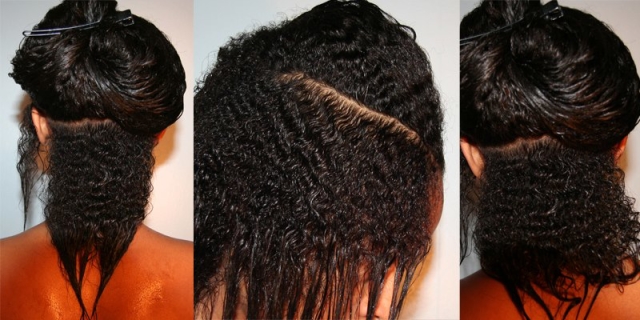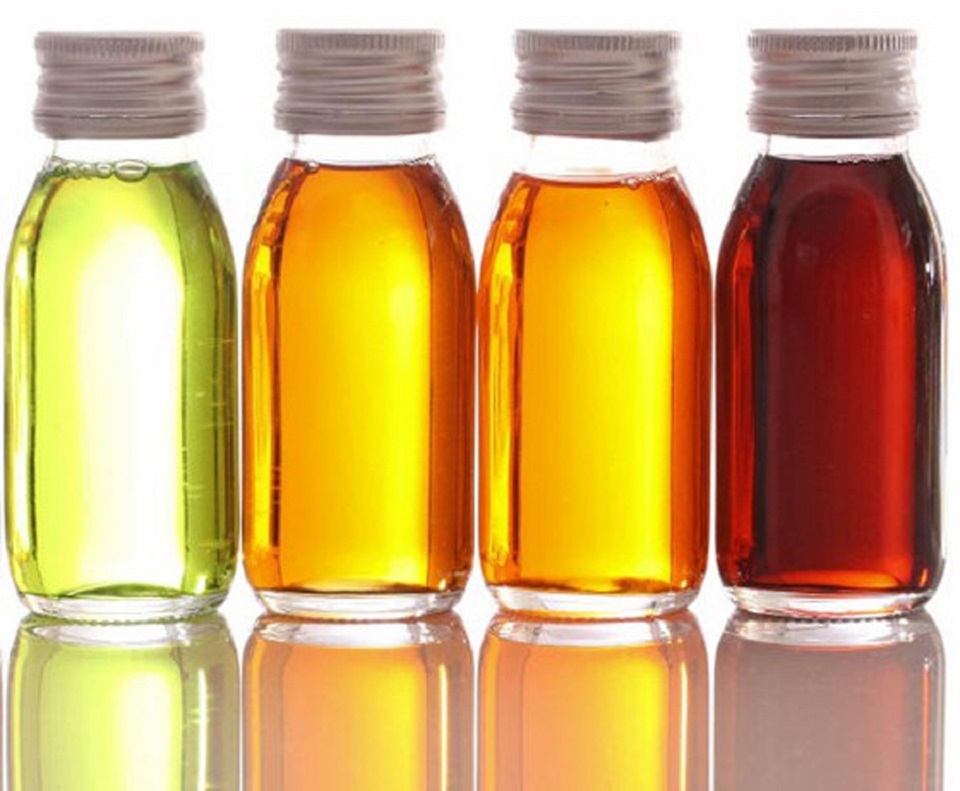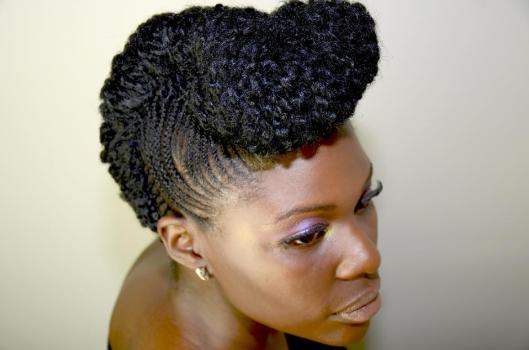 Our resident natural hair care professional Simeko Watkins-Hartley answers…
Our resident natural hair care professional Simeko Watkins-Hartley answers…
What is the best way to transition back to my natural hair?
So, you’re thinking of or decided to go natural. What now? The hardest part of transitioning to natural hair is changing your mind-set. Most people believe that naturally tight curly hair is not good hair, not beautiful hair, and just takes too much time and energy to care for. Well, let me ask you this: what do you consider good hair and/or beautiful hair? Shouldn’t it be the natural texture of hair that God has blessed each and every one of us with, which is hair in its healthiest state? And yes, caring for natural hair may require more time and energy but doesn’t anything worth having require some kind of nurturing? What you put into your hair is what you will get out of it! With that said, there are three important requirements for a smooth transition: Moisture, Strengthening & Protection.
If the following two steps are followed closely, they will provide you with everything you need to successfully transition from relaxed to natural with minimum breakage.
Step 1 – Choose the right products
Most, if not all, things that we put in and on our body (including our hair) should be beneficial to our health. Think about it, what is the general purpose of eating food? Is it not to supply our body with nutrients and energy to stay alive and healthy? Same goes for the products we use on our hair. These products should provide your hair with ingredients that will moisturize, strengthen, and nourish it.
Maintaining a good balance between moisture and protein (hair strengthener) is essential for healthy hair, period. If any of the two are thrown off balance there will be breakage. Natural and chemically treated hair requires lots of moisture. So, it is imperative for one who is transitioning (consisting of both natural and chemically treated hair) to moisturize, moisturize, moisturize. Now, moisturizing does not mean putting grease or oil on your hair and scalp. These products do not moisturize, they lubricate & nourish (well, only if they have nourishing ingredients, if not, then they just coat the hair and scalp). In order to truly moisturize your hair you need H2O (water). So, if the first ingredient in your product is not water or you don’t mist your hair with water first before apply oils or butters, then most likely you are not moisturizing your hair.
Hair is primarily made up of a protein called keratin, which makes it strong. When the hair is chemically processed or relaxed, it is in its weakest state because the bonds that makes the hair strong has been broken down to alter its natural state. So, strengthening the hair with added protein is especially vital for individual who have relaxers and/or transitioning. Although protein is needed to strengthen the hair, you want to be careful not to overdo it. Yes, treating your hair with too much protein can make it hard, leaving it vulnerable to breakage, which is exactly what you are working against.
Hair receives nourishment both inside and out. Healthy hair growth starts beneath the scalp within the follicle. Here is where the hair receives nutrients (from our blood) and sebum (oil to that lubricates the hair). So we can see that what we put in our body is just as, if not more, important then what we put in our hair. Nourishment that we put in the hair comes from products that consist of natural carrier and essential oils such as coconut, olive, jojoba, peppermint, sage, nettle, just to name a few. Some of these oils not only aid in softening our natural hair texture making it more manageable but they also help increase blood circulation which promotes hair growth.
Most, if not, all the ingredients in your product should be natural. Unfortunately, you will not find truly natural hair products in beauty supplies or department stores. Most natural products are either sold in health food stores, specialty stores or online.
As the saying goes, “everything is not for everybody” (even with all natural products)! So, how do you choose hair products that would benefit your hair?
- Analyze your scalp and hair.
- Research ingredients and their benefits
- Choose products that would address your hair care needs.
Step 2 – Choose the right styles
Choosing styles that protect your hair from breakage as it grows out is key to reaching your maximum hair length.
Here are some questions to consider when choosing a hair style that’s right for you.
- What style would look good on me?
- Is this style best for my hair type and my lifestyle?
- Will this style protect my hair from breakage?
- How often should I trim my hair?
If you find that you are uncertain about any or all of these questions, you can consult with a stylist that specializes in natural hair care or look through hair magazines or surf sites online that cater to natural hair care.
Some styling options for transitioning are:
The BC (BIG CHOP) – cutting off all the chemically treated hair and rocking a natural cut while your hair goes out. Now, it takes a lot of confidence to wear this style but you certainly avoid any potential damage to your hair.
Braids/Twists/Weaves/Wigs – These styling options are good because they last up to 2 months and your hair is not being stressed by combing, brushing, or tugging at it every day. However, care should be taken when wearing these styles as well. If put in too tight or too small, they can cause traction alopecia which would defeat the purpose of growing your hair out healthy and long. The key to maintaining your hair while braided, weaved, or wearing wigs is keeping the scalp and hair clean, moisturized, and nourished.
Thermal Heat Straightening – This option allows you to temporarily straighten the natural hair to blend textures as the hair grows out. In my opinion, this should be your last option. The reason being that the whole idea of going natural is to hopefully have your healthiest hair possible and using excessive heat can be potentially damaging to your hair. Care must be given when choosing a heating appliance to straighten your natural hair because too much heat will not only permanently straighten your natural hair but can cause breakage.
For best results without damaging the hair, always deep condition (this strengthens and provide needed moisture) the hair prior, use a heat protectant (some really great natural plant oils to use are grapeseed, argan, coconut, avocado, and shea butter) and use an electrical heating appliance with a temperature control setting (temperature should be adjusted based on the texture and thickness of the hair). And remember, the usage of heat should be minimized (no more than once every 2-3 weeks) as much as possible. I cannot stress this enough: the more you straighten your hair, the more likely you will experience breakage and/or heat damage. So try protective styles, like putting the hair in a bun or twist outs, to stretch the amount of time between straightening.
Natural Set such as Rod Sets, Twists Outs & Braid Outs – this options is good for a number of reasons. For individuals who are not ready to chop off all of their hair, it allows you to keep the length of your hair as it grows out. There are many who are just not comfortable with adding hair and want to be as natural as possible, so wearing natural sets provides texture to the hair to give a more natural look as it grows out. And lastly, it’s a great way to style your hair without heat. Setting your hair and letting it air dry is a great way to prevent breakage and heat damage.
Naturally Yours,
Simeko Watkins-Hartley
Owner & Creative Director of Meko, New York Natural Hair Care Spa & Boutique
Disclaimer: This information serves as a guide to inform, inspire and encourage women, like myself, to regain and maintain their healthiest hair possible.




almost a year ago i decided to go natural so I shaved ALL OF MY HAIR OFF. I few months ago i got so frustrated trying to mange my natural hair and cut it into a Mohawk, not realizing how much my hair has grown. I regret cutting it and I want to grow out my Mohawk. Is their any other way than cutting my hair off again
Hi Andrea,
Since it’s been a few months, you may have just enough hair to grasp for braiding. If you don’t want to cut the longer hair to meet the shorter hair that you’ve cut off, the first thing that pops into my head would be to install some braids, either loose extensions or cornrows, until that hair grows in. You’ll still be playing the waiting game on that shorter bit of hair on the sides though. As it grows out, you may end up with a decent-looking tapered fro of sorts (which I actually find very cute) but that remains to be seen. However, if you cut down the mohawk to meet the shorter sides, you’ll have the pleasure of having everything grow in together, all one length, with which you can do as you please as it grows without being worried about the length differences. I hope this helps! 🙂
Reblogged this on Natural Hair Care Tips.